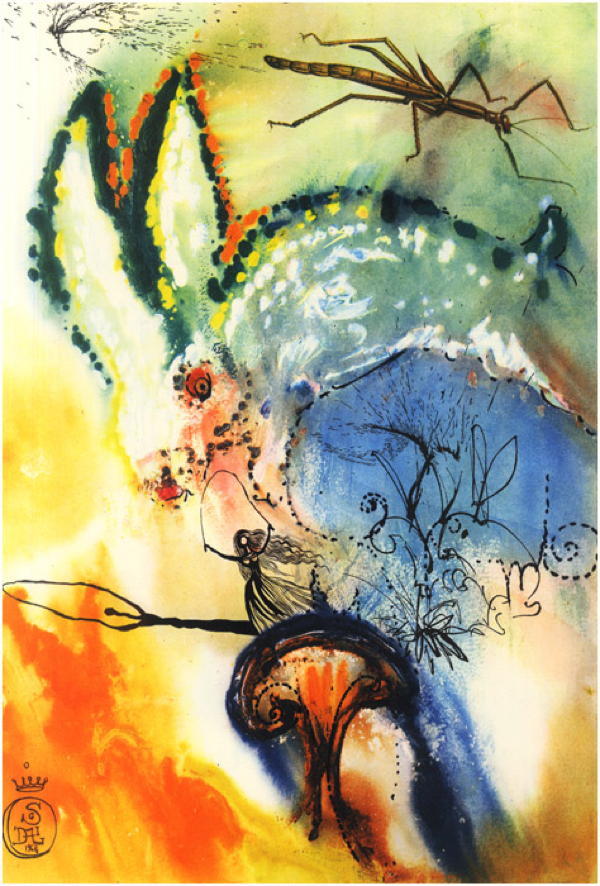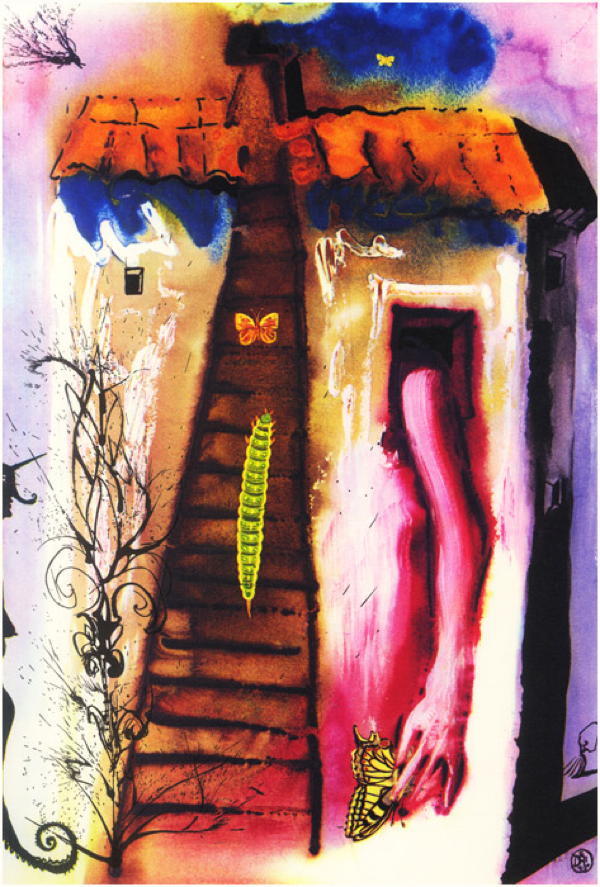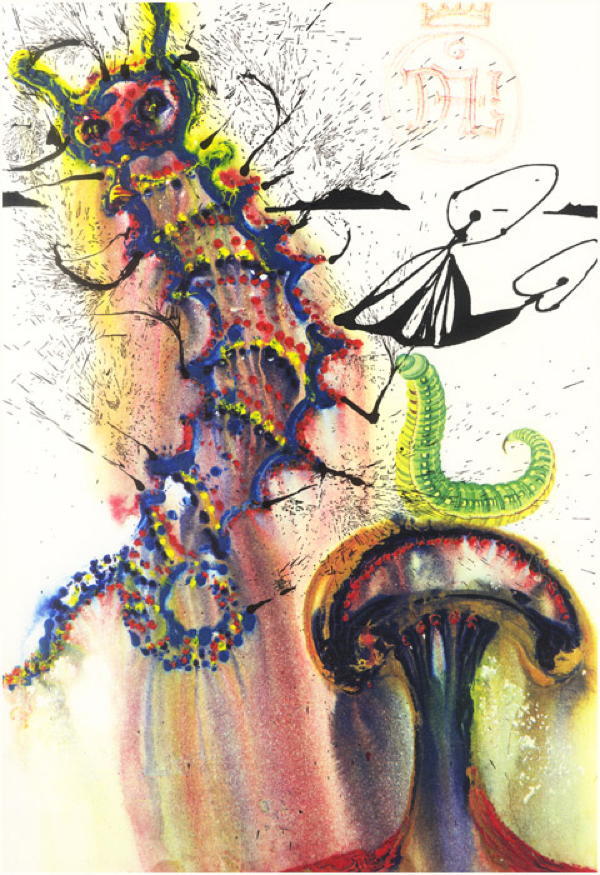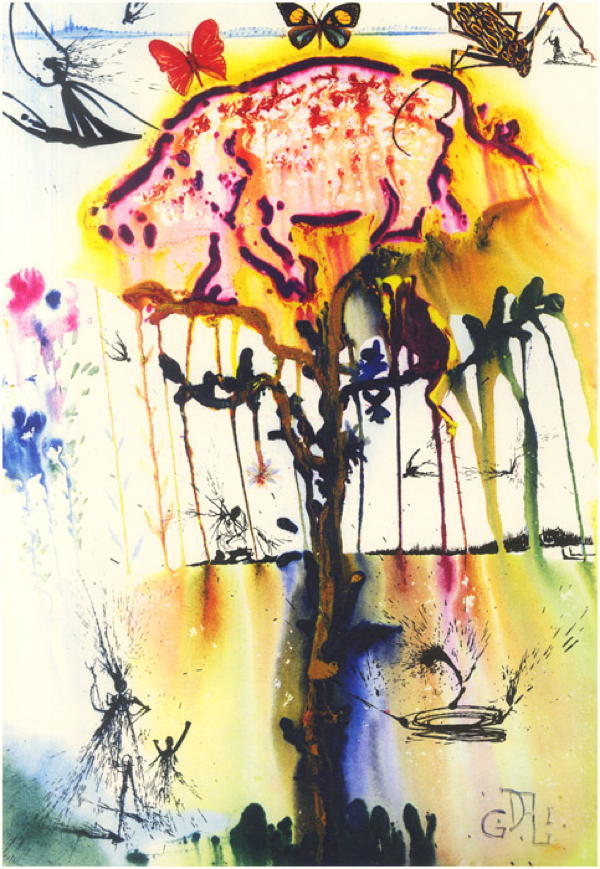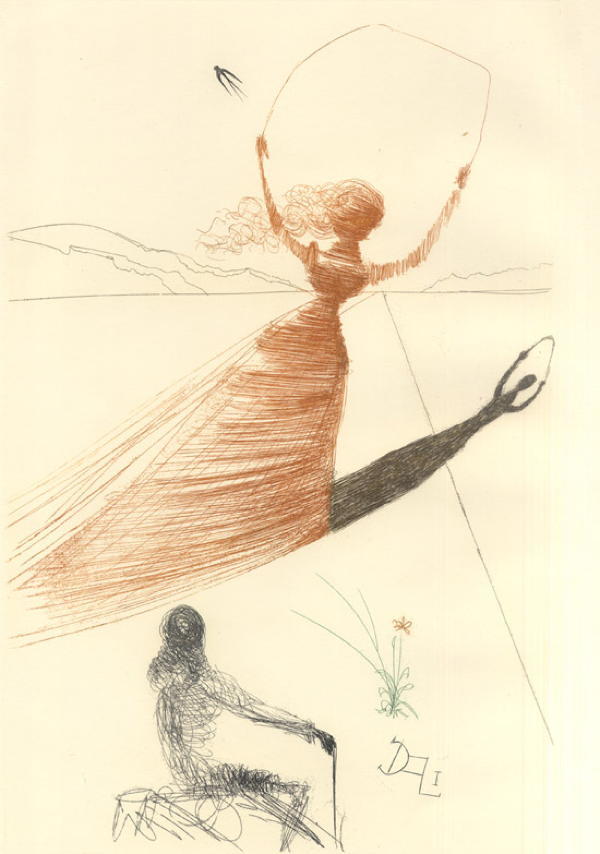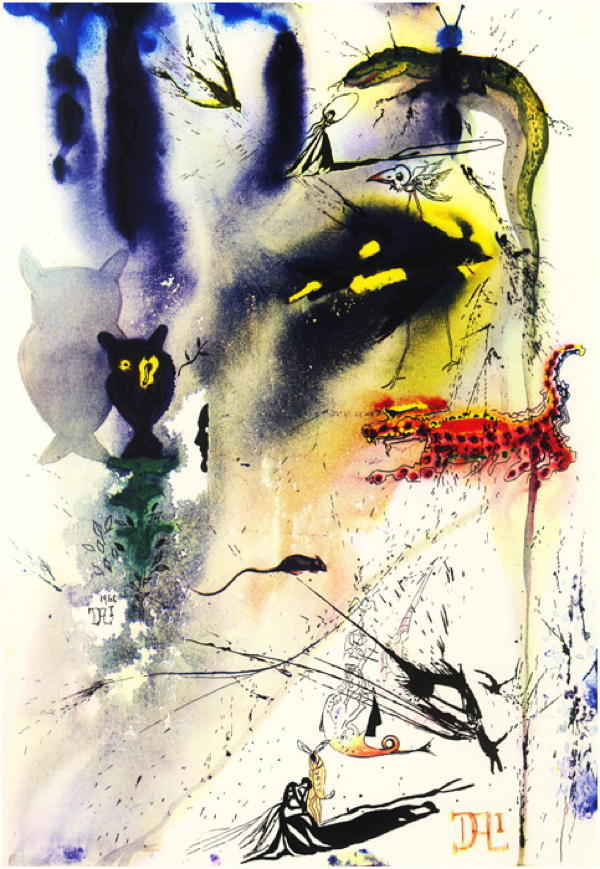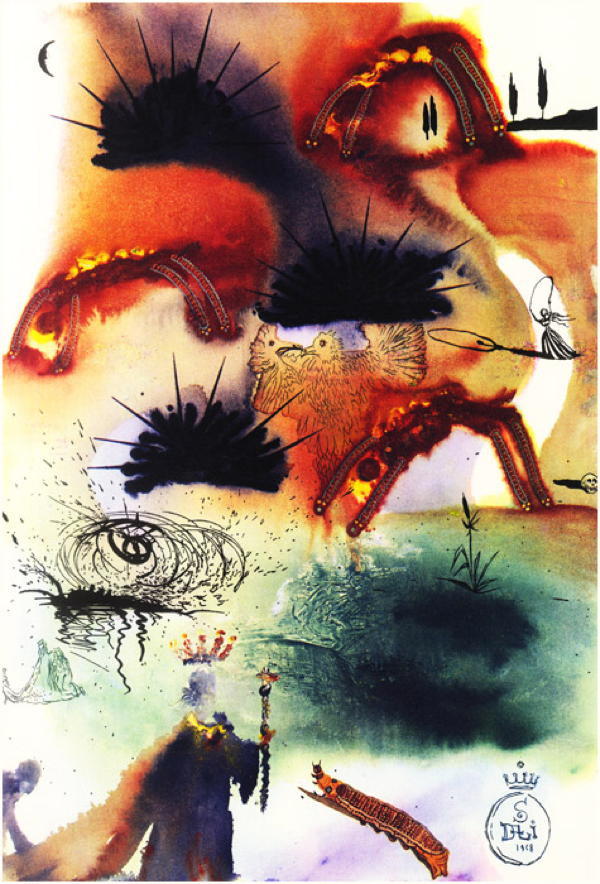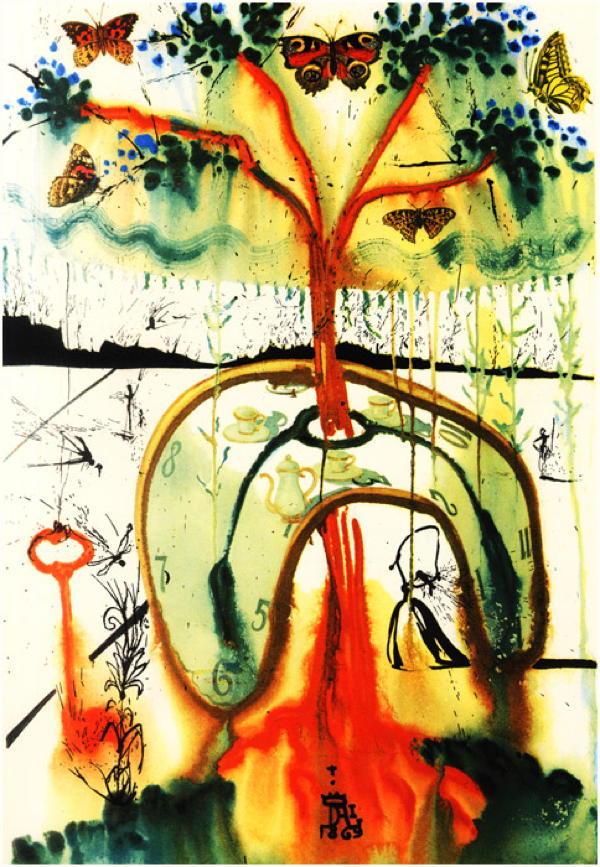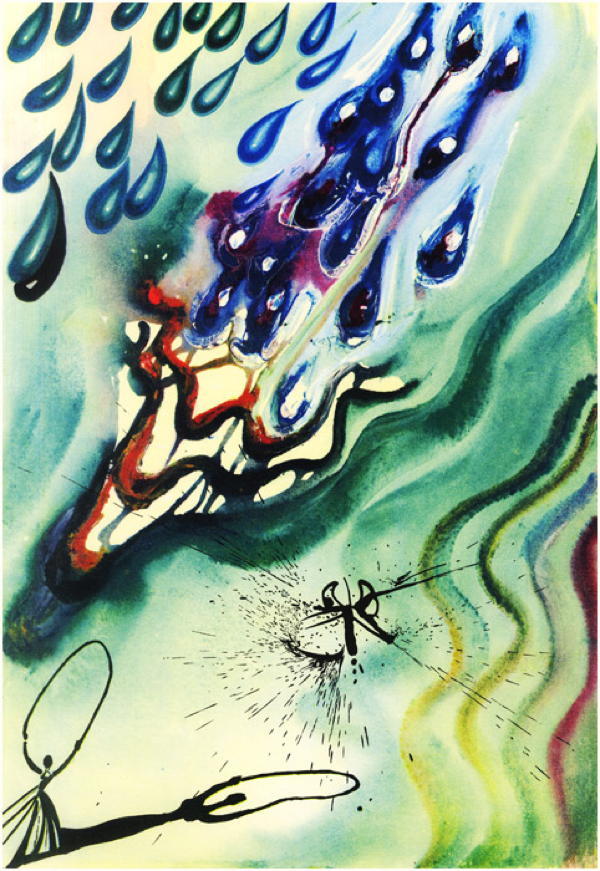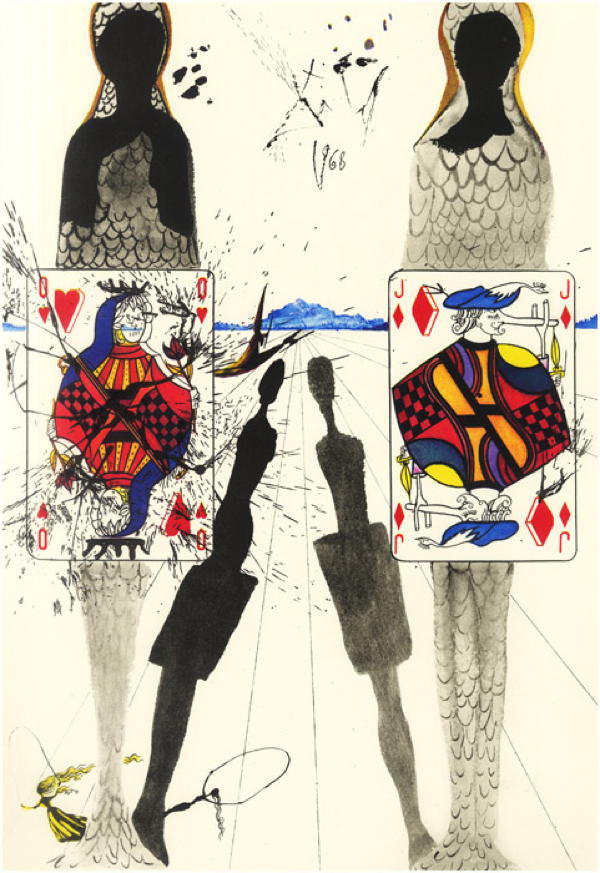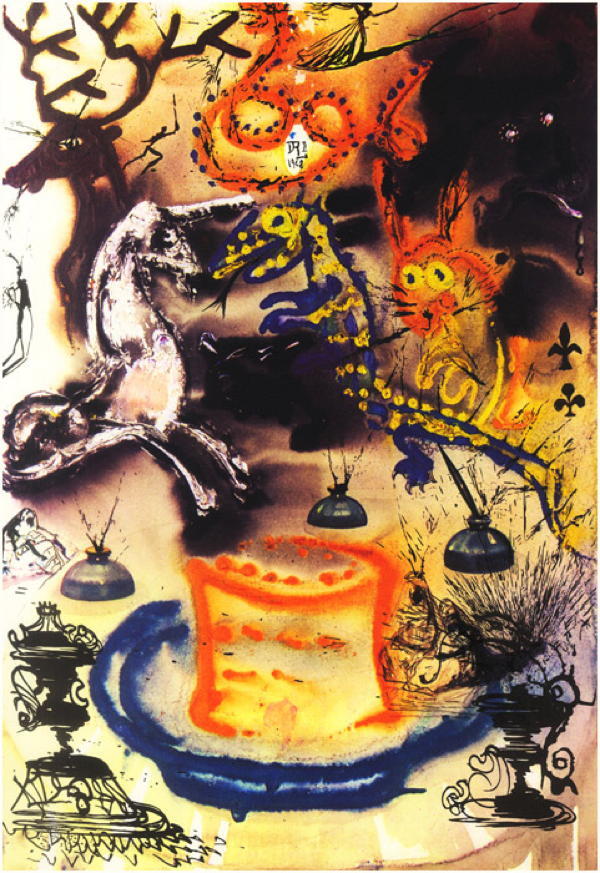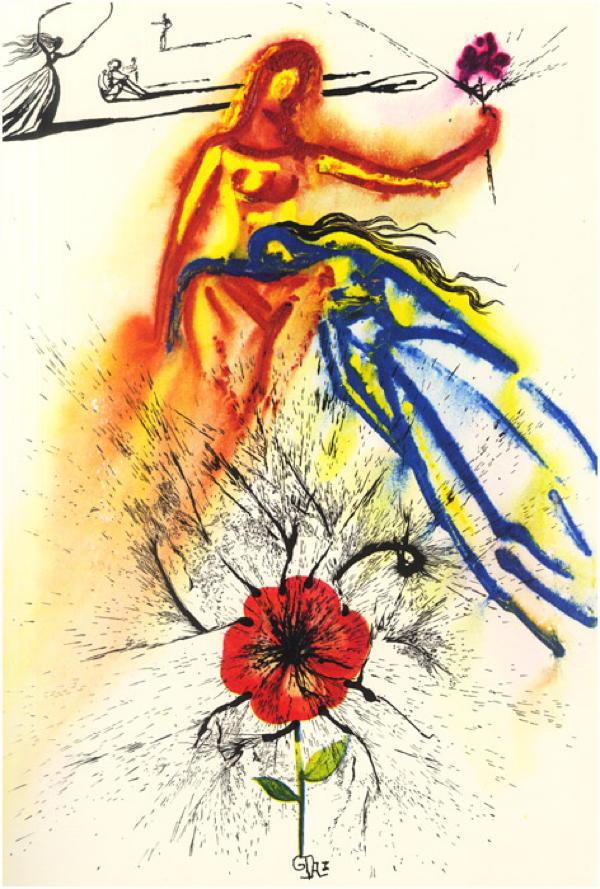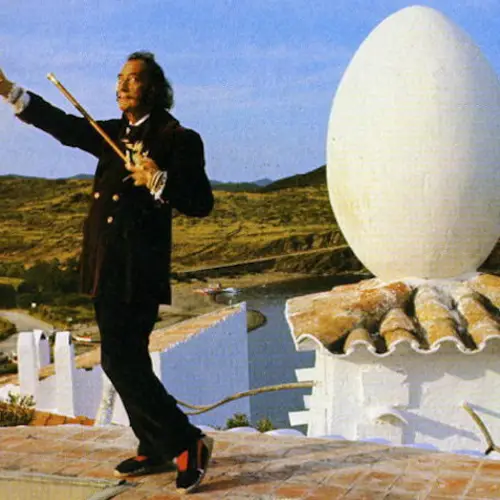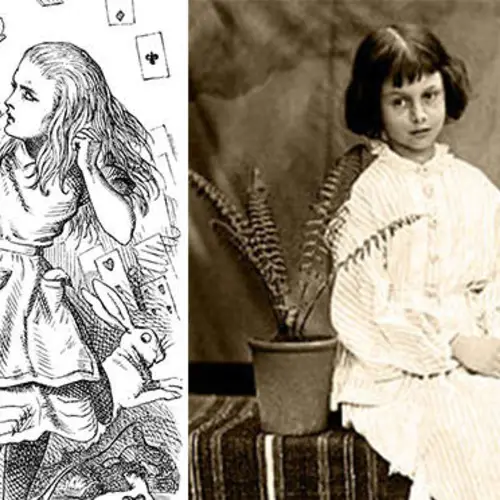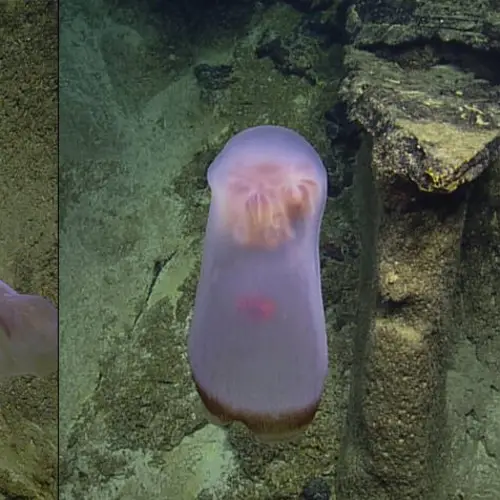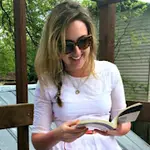Blending Lewis Carrol's tale with his surrealist style, it's easy to see why Salvador Dali's "Alice In Wonderland" is one of his most prized works.
Since at least the 1960s, Lewis Carroll’s classic Alice in Wonderland has become something of an institution within hallucinogenic drug culture. From Jefferson Airplane’s “White Rabbit” waxing to The Matrix‘s pill-propelled trips to “Wonderland”, the book’s association with drugs–no matter how loosely rooted in reality–is unlikely to disappear any time soon.
With that in mind, it, of course, makes sense that surrealist artist Salvador Dali, the man who boldly declared that he was drugs, would have provided his own illustrated interpretation of Alice and her trippy friends in 1969.
This collection of heliogravures (a fancy process where the artist etches figures onto a special gel-covered copper plate already exposed to film positives) eventually became one of Dalí’s most prized suites of all time. Blending the timeless whimsy of the children’s tale with the technicolor dreams of the 1960s, it’s easy to see why:
For more Salvador Dali goodness, be sure to check out our post on the best Salvador Dali photos and influential surrealist artists.
